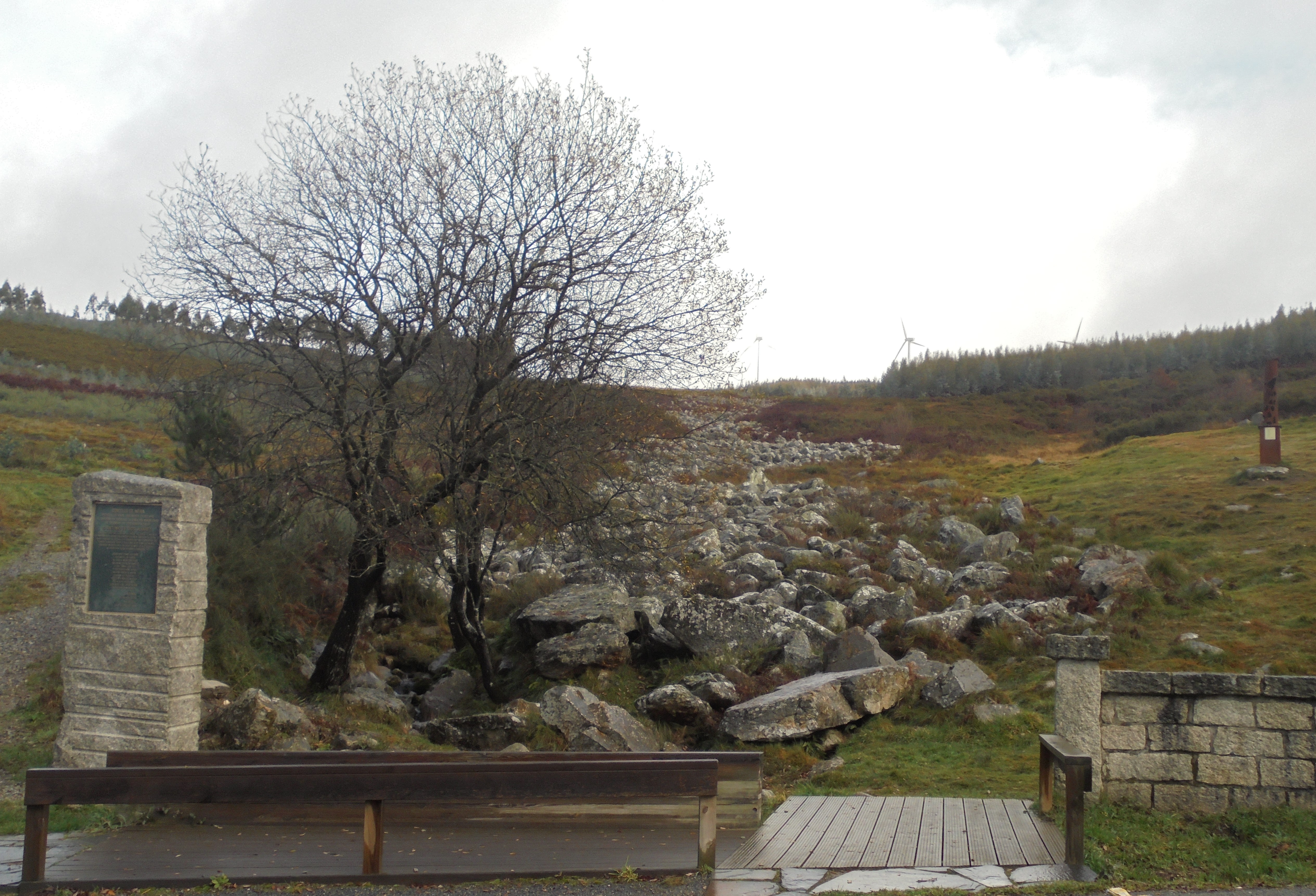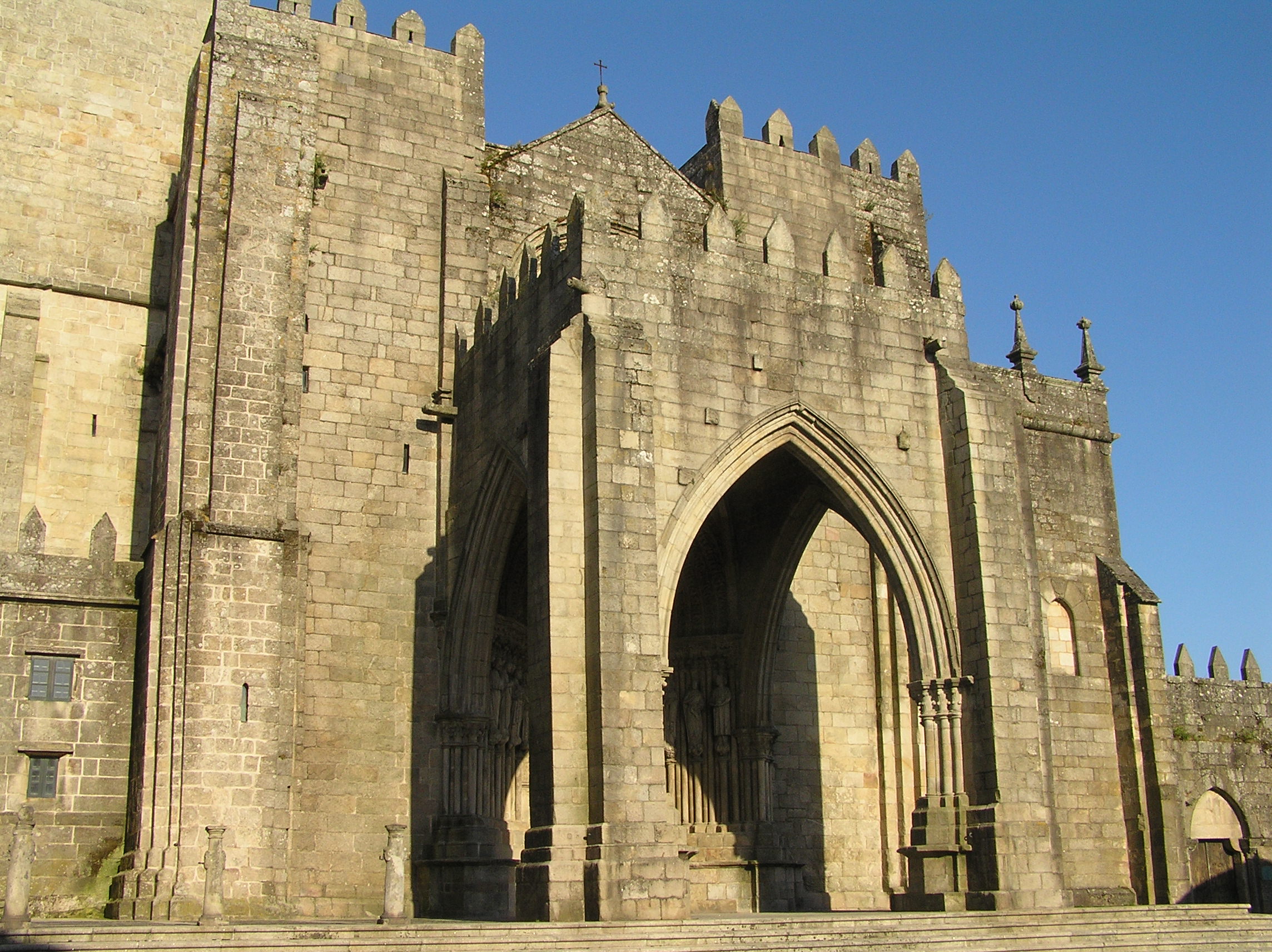|
Grovii
The Grovii or Gravii were an ancient Gallaeci tribe who inhabited the low valley of the Minho river, present day Portugal and Galicia (Spain), and also along the coast near the rivers "Avo" (the Ave river), Celadus, Nebis and Limia, northern Portugal. Origin and History Pomponius Mela stated that all the people living along the coast of Gallaecia were Celtic, with the exception of the Grovii, while Pliny wrote that they had a Greek origin. Anyhow, E.R. Luján, studying their onomastics, couldn't conclude on their non-Celtiness, since their anthroponyms and toponyms could be Celtic. Their main settlement was Tude, present day Tui, Pontevedra, by the border with Portugal along the Minho river. The non-localized oppida of Avobriga and Lambriaca were located near the Grovii lands. See also *Pre-Roman peoples of the Iberian Peninsula This is a list of the pre-Roman people of the Iberian Peninsula (the Roman Hispania, i. e., modern Portugal, Spain and Andorra). Some closely ... [...More Info...] [...Related Items...] OR: [Wikipedia] [Google] [Baidu] |
Gallaeci
The Gallaeci (also Callaeci or Callaici; grc, Καλλαϊκοί) were a Celtic tribal complex who inhabited Gallaecia, the north-western corner of Iberia, a region roughly corresponding to what is now the Norte Region in northern Portugal, and the Spanish regions of Galicia, western Asturias and western León before and during the Roman period. They spoke a Q-Celtic language related to Northeastern Hispano-Celtic, called Gallaecian or Northwestern Hispano-Celtic. The region was annexed by the Romans in the time of Caesar Augustus during the Cantabrian Wars, a war which initiated the assimilation of the Gallaeci into Latin culture. The endonym of modern-day Galicians, ''galegos'', derives directly from the name of this people. History The fact that the Gallaeci did not adopt writing until contact with the Romans constrains the study of their earlier history. However, early allusions to this people are present in ancient Greek and Latin authors prior to the conquest, wh ... [...More Info...] [...Related Items...] OR: [Wikipedia] [Google] [Baidu] |
Portugal
Portugal, officially the Portuguese Republic ( pt, República Portuguesa, links=yes ), is a country whose mainland is located on the Iberian Peninsula of Southwestern Europe, and whose territory also includes the Atlantic archipelagos of the Azores and Madeira. It features the westernmost point in continental Europe, and its Iberian portion is bordered to the west and south by the Atlantic Ocean and to the north and east by Spain, the sole country to have a land border with Portugal. Its two archipelagos form two autonomous regions with their own regional governments. Lisbon is the capital and largest city by population. Portugal is the oldest continuously existing nation state on the Iberian Peninsula and one of the oldest in Europe, its territory having been continuously settled, invaded and fought over since prehistoric times. It was inhabited by pre-Celtic and Celtic peoples who had contact with Phoenicians and Ancient Greek traders, it was ruled by the Ro ... [...More Info...] [...Related Items...] OR: [Wikipedia] [Google] [Baidu] |
Pre-Roman Peoples Of The Iberian Peninsula
This is a list of the pre-Roman people of the Iberian Peninsula (the Roman Hispania, i. e., modern Portugal, Spain and Andorra). Some closely fit the concept of a people, ethnic group or tribe. Others are confederations or even unions of tribes. Pre-Indo-European speakers Aquitanians * Airenosini/ Arenosii *Iacetani *Vascones Iberians * Andosini - in the mountains of East Pyrenees southern slopes, in the high Segre river basin, area of modern Andorra. *Ausetani - in the Osona region (old County of Osona), in the middle Ter river basin. Ausa (today's Vic) was their main centre. *Bastetani/ Bastitani/Bastuli - The biggest iberian tribal confederation in area, they dwelt in a territory that included large areas of the mediterranean coast and the Sierra Nevada, in what are today parts of the modern provinces of Murcia, Albacete, Jaén, Almería, Granada and Málaga. Basti (today's Baza) was their main centre. ** Mastieni - in and around Mastia territory ( Cartagena). *B ... [...More Info...] [...Related Items...] OR: [Wikipedia] [Google] [Baidu] |
Minho (river)
The Minho ( , ) or Miño ( , , ; cel-x-proto, Miniu) is the longest river in Galicia, sharing the border with Portugal, with a length of . By discharge, it is the fourth river of the Iberian peninsula, after the Douro, Ebro, and Tagus. The Minho waters vineyards and farmland, is used to produce hydroelectric power, and also delineates a section of the Spanish–Portuguese border. In ancient English maps, it appears as Minno. The source of the Minho lies north of Lugo in Galicia, in a place called ''Pedregal de Irimia''. After about , the river passes just south of the walls of this old Roman city, discharging in average 42 m3/s, and flows south through canyons until the valley widens north of Ourense. The river has been harnessed in reservoirs from Portomarín to Frieira. Along its length, it has the following reservoirs: Belesar with , Peares with , Velle with , Castrelo with and Frieira with . About north of Ourense at Os Peares, the Minho, with a discharge of 102 m ... [...More Info...] [...Related Items...] OR: [Wikipedia] [Google] [Baidu] |
Cávado River
The Cávado River ( pt, rio Cávado; ) is a river located in northern Portugal. It has its source in Serra do Larouco at an elevation of above sea level. It runs from Fonte da Pipa, near the triangulation station Larouco, to its mouth into the Atlantic Ocean next to the city of Esposende. It flows through the districts of Vila Real and Braga, in Cávado Region, and flows near the towns of Vila Verde and Esposende and cities of Braga and Barcelos. Its tributaries are the Homem River, Rabagão River and Saltadouro River. Dams and Reservoirs Beginning at the headwaters, there are 5 dams on the Cávado: Gallery File:Cavado ponte do bico.jpg, Cávado in Palmeira Braga Braga ( , ; cel-x-proto, Bracara) is a city and a municipality, capital of the northwestern Portuguese district of Braga and of the historical and cultural Minho Province. Braga Municipality has a resident population of 193,333 inhabitants (in ... File:Foz cavado.jpg , Mouth in Esposende Cáv ... [...More Info...] [...Related Items...] OR: [Wikipedia] [Google] [Baidu] |
Neiva River
Neiva () is the capital of the Department of Huila. It is located in the valley of the Magdalena River in south central Colombia with a population of about 357,392 inhabitants. It is one of the most important cities in southern Colombia, mainly because of its strategic geographical location. History Neiva was first founded in 1539 by Juan de Cabrera in an area now belonging to the municipality of Campoalegre. In 1550, Juan de Alonso y Arias relocated the city to the place that is now the municipality of Villavieja. At this location, the city was destroyed by indigenous tribes in 1560. The city was founded, at its current location, for the third and final time in 1612 by Diego de Ospina y Medinilla. Neiva became important during the colonial times because of its strategic location. It was located in the trade route that communicated the Viceroyalty of Peru with Bogotá and Caracas. The city was declared as the capital of the Province of Neiva, made up of the Neiva, La Plat ... [...More Info...] [...Related Items...] OR: [Wikipedia] [Google] [Baidu] |
Pomponius Mela
Pomponius Mela, who wrote around AD 43, was the earliest Roman geographer. He was born in Tingentera (now Algeciras) and died AD 45. His short work (''De situ orbis libri III.'') remained in use nearly to the year 1500. It occupies less than one hundred pages of ordinary print, and is described by the ''Encyclopædia Britannica'' (1911) as "dry in style and deficient in method, but of pure Latinity, and occasionally relieved by pleasing word-pictures." Except for the geographical parts of Pliny's ''Historia naturalis'' (where Mela is cited as an important authority), the ''De situ orbis'' is the only formal treatise on the subject in Classical Latin. Biography Little is known of the author except his name and birthplace—the small town of Tingentera or Cingentera in southern Spain, on Algeciras Bay (Mela ii. 6, § 96; but the text is here corrupt). The date of his writing may be approximately fixed by his allusion (iii. 6 § 49) to a proposed British expedition of the ... [...More Info...] [...Related Items...] OR: [Wikipedia] [Google] [Baidu] |
Gallaecia
Gallaecia, also known as Hispania Gallaecia, was the name of a Roman province in the north-west of Hispania, approximately present-day Galicia, northern Portugal, Asturias and Leon and the later Kingdom of Gallaecia. The Roman cities included the port Cale (Porto), the governing centers Bracara Augusta (Braga), Lucus Augusti (Lugo) and Asturica Augusta (Astorga) and their administrative areas Conventus bracarensis, Conventus lucensis and Conventus asturicensis. Description The Romans named the northwest part of Hispania or the Iberian Peninsula ''Gallaecia'' after the celtic tribes of the area the Gallaeci or Gallaecians. The Gallaic make their entry into written history in the first-century epic ''Punica'' of Silius Italicus on the First Punic War: :''Fibrarum et pennae divinarumque sagacem'' :''flammarum misit dives Callaecia pubem,'' :''barbara nunc patriis ululantem carmina linguis,'' :''nunc pedis alterno percussa verbere terra,'' :''ad numerum resonas gaudentem ... [...More Info...] [...Related Items...] OR: [Wikipedia] [Google] [Baidu] |
Celts
The Celts (, see pronunciation for different usages) or Celtic peoples () are. "CELTS location: Greater Europe time period: Second millennium B.C.E. to present ancestry: Celtic a collection of Indo-European peoples. "The Celts, an ancient Indo-European people, reached the apogee of their influence and territorial expansion during the 4th century bc, extending across the length of Europe from Britain to Asia Minor."; . " e Celts, were Indo-Europeans, a fact that explains a certain compatibility between Celtic, Roman, and Germanic mythology."; . "The Celts and Germans were two Indo-European groups whose civilizations had some common characteristics."; . "Celts and Germans were of course derived from the same Indo-European stock."; . "Celt, also spelled Kelt, Latin Celta, plural Celtae, a member of an early Indo-European people who from the 2nd millennium bce to the 1st century bce spread over much of Europe."; in Europe and Anatolia, identified by their use of Celtic langua ... [...More Info...] [...Related Items...] OR: [Wikipedia] [Google] [Baidu] |
Tui, Pontevedra
Tui (; Spanish: ''Tuy'') is a municipality in the province of Pontevedra in the autonomous community of Galicia, in Spain. It is situated in the ''comarca'' of O Baixo Miño. It is located on the right bank of the Miño River, facing the Portuguese town of Valença. The municipality of Tui is composed of 11 parishes: Randufe, Malvas, Pexegueiro, Areas, Pazos de Reis, Rebordáns, Ribadelouro, Guillarei, Paramos, Baldráns and Caldelas. Two bridges connect Tui and Valença: Tui International Bridge (known in Portugal as ''Valença International Bridge'' or "Friendship Bridge"), completed in 1878 under the direction of Pelayo Mancebo, and a modern one from the 1990s. Both countries being signatories of the Schengen Treaty, there are normally no formalities in crossing what is the busiest border-point in northern Portugal. History Prehistory The Tui area was inhabited since prehistoric times. Evidence of this are the sites found during construction of the highway Vigo-Tui, on the ... [...More Info...] [...Related Items...] OR: [Wikipedia] [Google] [Baidu] |


